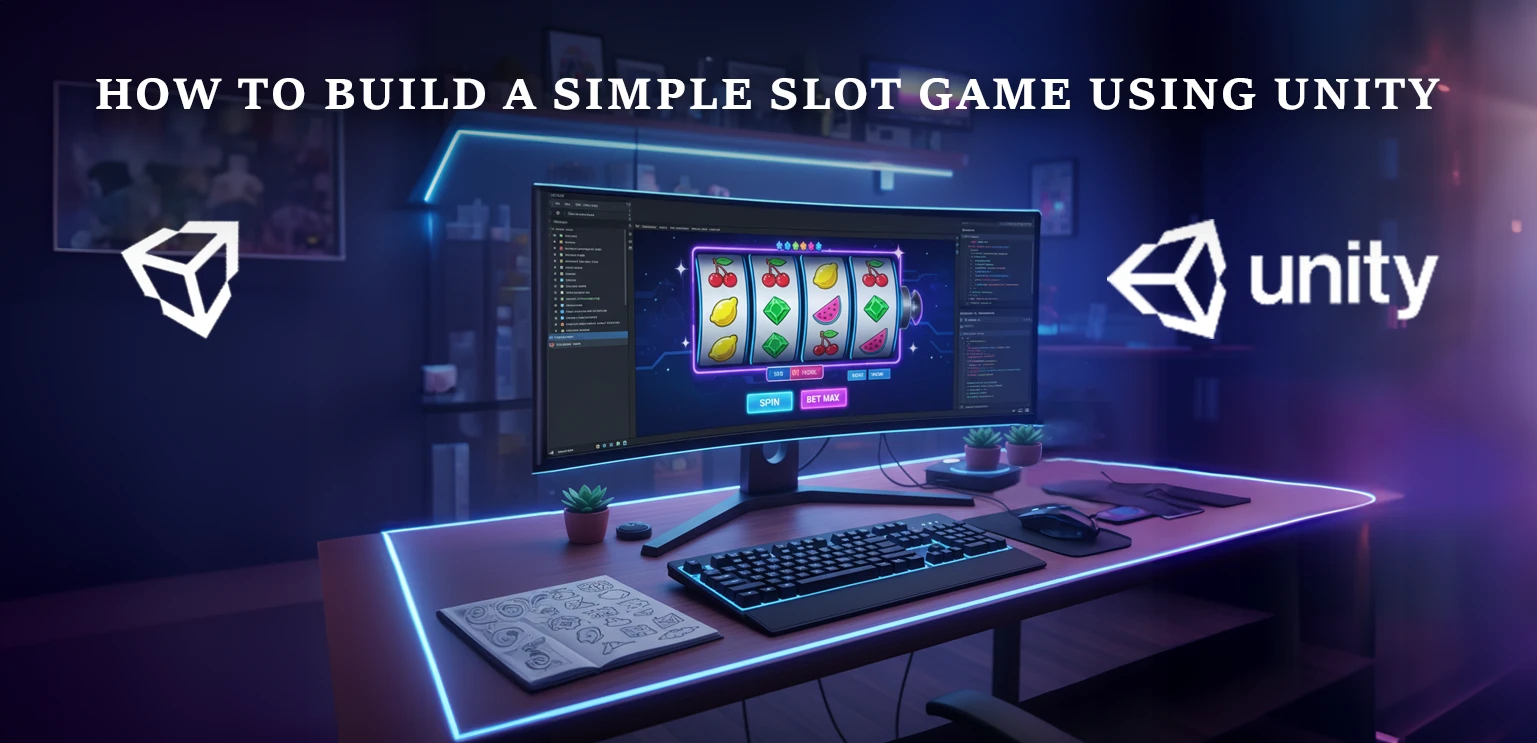How to Build a Slot Game in Unity – Step-by-Step Guide
If you're thinking of building a slot game, Unity is one of the best tools to start with. Its user-friendly interface, rich asset store, and flexible scripting system make it ideal for quick prototypes and polished releases alike.
At Gamix Labs, we use Unity to rapidly test and iterate slot mechanics, art styles, and UI flows. Whether you're a beginner or a developer looking to expand your skills, this guide will walk you through creating a simple slot game—from concept to first spin.

Setting Up Your Project in Unity
🔹 Installing Unity and Required Packages
Start by downloading and installing Unity Hub. Use a stable Long-Term Support (LTS) version like Unity 2022.3. Create a new 2D project. To enhance animations and create seamless transitions during gameplay, consider adding the DOTween plugin, which is available through the Unity Asset Store.
🔹 Creating Scene, UI Canvas & Basic Layout
Once inside your project:
- Begin by placing a Canvas in your scene and configuring it to operate in Screen Space – Camera mode.
- Place a panel to act as your game's background.
- Add buttons for "Spin", "Bet", and display areas for "Balance" and "Win".
- Set up three or more placeholder images in a horizontal layout to represent the reels.
Make sure your UI elements are properly anchored so they scale across devices.
Designing Your Reels, Symbols, and Spin Logic
🔹 Preparing Reel Images and Symbol Assets
Create a set of simple symbols like fruits, gems, or themed icons. Import your PNG assets into Unity and assign them as Sprites (2D and UI). Arrange them in a resources folder for easy access through scripts.
🔹 Scripting Spin Animation and Randomness
Create a SpinController.cs script. Inside it:
- Use
Random.Range()to select symbols. - Create a coroutine that scrolls symbols visually (loop through sprite images quickly).
- Animate the stop with DOTween for a smooth finish.
Here's a basic example:
public void SpinReel(Image reelImage) {
int index = Random.Range(0, symbols.Length);
reelImage.sprite = symbols[index];
}
Extend this for all reels. Add staggered stopping for dramatic tension.
Implementing Payout Logic and Win Conditions
🔹 Defining Paylines and Symbol Combinations
Start with a simple single payline—the middle row.
Example winning combos:
| Combination | Payout |
|---|---|
| 3 Crowns | 50x |
| 3 Cherries | 10x |
| 2 Bells | 2x |
Use a dictionary to store payout rules and check results after each spin.
🔹 Calculating Wins and Updating Balance
Keep a balance tracker. Deduct bet on spin start; reward if won.
if (symbols[0] == symbols[1] && symbols[1] == symbols[2]) {
int payout = payoutTable[symbols[0].name] * currentBet;
balance += payout;
}
Update UI text to show new balances and winnings.
Adding Visual Feedback and UI Polishing
🔹 Animations, Win Effects & Buttons
Use DOTween or Animator to:
- Glow or shake winning symbols
- Fire confetti or coins for big wins
- Scale buttons when pressed
This increases player excitement & retention.
🔹 Sound Design & Feedback
Add sound effects such as:
- Reel Spin
- Reel Stop
- Win Jingle
- Button Clicks
Even basic audio makes spins more immersive.
Playtesting & Debugging in Unity Editor
Use the Unity editor to test various spin scenarios.
Common issues to watch for:
- Reels not updating correctly
- Stopping too early or too late
- Incorrect balance calculations
- UI layout breaking on different resolutions
Exporting to WebGL or Mobile
When ready to share your prototype:
- File → Build Settings
- Select target platform (WebGL, Android, or iOS)
- Adjust compression & resolution settings
- Test on real devices if possible
Ensure UI works well on both portrait and landscape.
Common Pitfalls & Beginner Mistakes
Most tutorials ignore critical real-world mechanics:
❌ Basic randomness only — no RTP control
❌ Weak UI/UX polish
❌ No handling for invalid or interrupted spin states
For real slot games, implement:
- Weighted RNG for realistic Return to Player (RTP)
- Smooth, polished UI with feedback loops
- Error and edge case handling
Gamix Labs Tips for Scaling to a Real Slot Game
To evolve from prototype to production:
✅ Modular reel & reward systems
✅ User accounts & backend coin syncing
✅ Analytics & player tracking
✅ Daily rewards, missions, events
✅ Mobile optimization & asset compression
This is how real slot games retain players.
Conclusion
By following this guide, you've created a playable, visual, and functional slot game—all in Unity. It’s a solid first step. From here, you can expand on visuals, add depth with features like free spins, jackpots, social elements, or even Web3 integrations.
At Gamix Labs, we help turn prototypes like this into high-performing slot games—polished, optimized, and compliant with casino standards. Whether you're testing an idea or planning a full-scale release, the tools and approach matter.
And now, you’ve got both.
Frequently Asked Questions
Do I need to code everything in Unity?
No. Unity's drag-and-drop tools handle layout, but logic like spinning and payouts requires simple C# scripting.
Can I add more reels later?
Yes. Just update your layout and script logic to support 5 reels instead of 3.
Can I monetize this prototype?
You'll need proper legal compliance, backend security, and platform licenses to go live commercially.
Is Unity free to use?
Unity is free for personal use. For commercial projects exceeding revenue thresholds, paid plans apply.
What if I want to add blockchain or wallet features later?
You can integrate Web3 SDKs like WalletConnect or Unity WebGL wallet wrappers—our Gamix Labs team specializes in such hybrid builds.